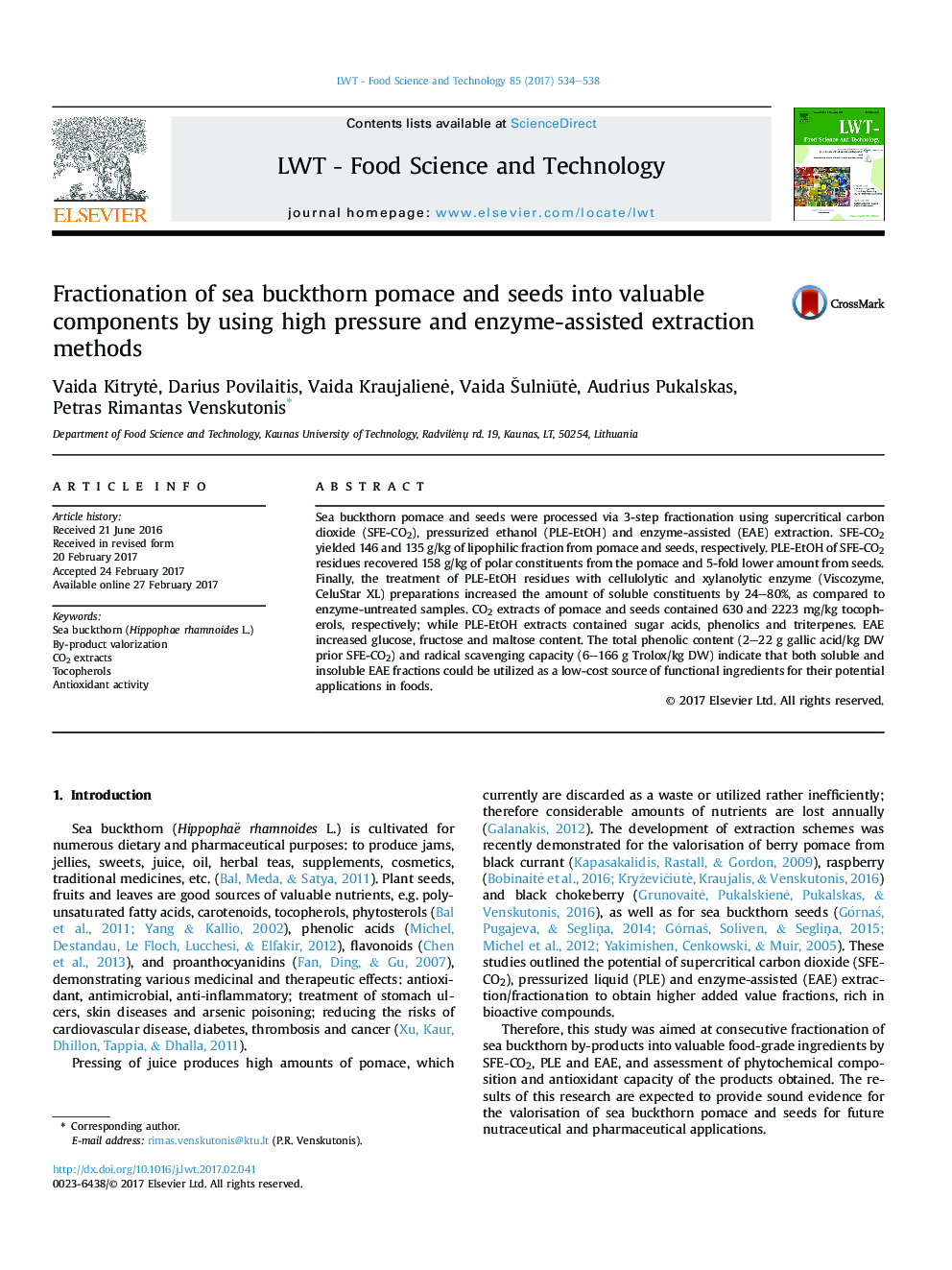| Article ID | Journal | Published Year | Pages | File Type |
|---|---|---|---|---|
| 5768418 | LWT - Food Science and Technology | 2017 | 5 Pages |
â¢Sea buckthorn pomace and seeds were fractionated by consecutive extractions.â¢Supercritical CO2, pressurised liquid and enzyme-assisted extractions applied.â¢Supercritical CO2 extraction yielded tocopherol-containing lipophilic fractions.â¢Pressurised ethanol gave 5 times more extract from pomace than from seeds.â¢Enzymes increased the yield of H2O-soluble fraction and monosaccharide content.
Sea buckthorn pomace and seeds were processed via 3-step fractionation using supercritical carbon dioxide (SFE-CO2), pressurized ethanol (PLE-EtOH) and enzyme-assisted (EAE) extraction. SFE-CO2 yielded 146 and 135Â g/kg of lipophilic fraction from pomace and seeds, respectively. PLE-EtOH of SFE-CO2 residues recovered 158Â g/kg of polar constituents from the pomace and 5-fold lower amount from seeds. Finally, the treatment of PLE-EtOH residues with cellulolytic and xylanolytic enzyme (Viscozyme, CeluStar XL) preparations increased the amount of soluble constituents by 24-80%, as compared to enzyme-untreated samples. CO2 extracts of pomace and seeds contained 630 and 2223Â mg/kg tocopherols, respectively; while PLE-EtOH extracts contained sugar acids, phenolics and triterpenes. EAE increased glucose, fructose and maltose content. The total phenolic content (2-22Â g gallic acid/kg DW prior SFE-CO2) and radical scavenging capacity (6-166Â g Trolox/kg DW) indicate that both soluble and insoluble EAE fractions could be utilized as a low-cost source of functional ingredients for their potential applications in foods.
